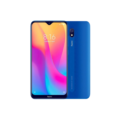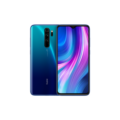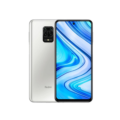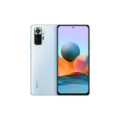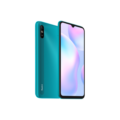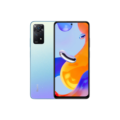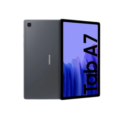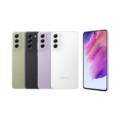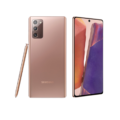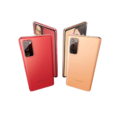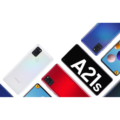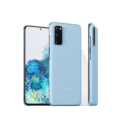Redmi 6A Harga Malaysia
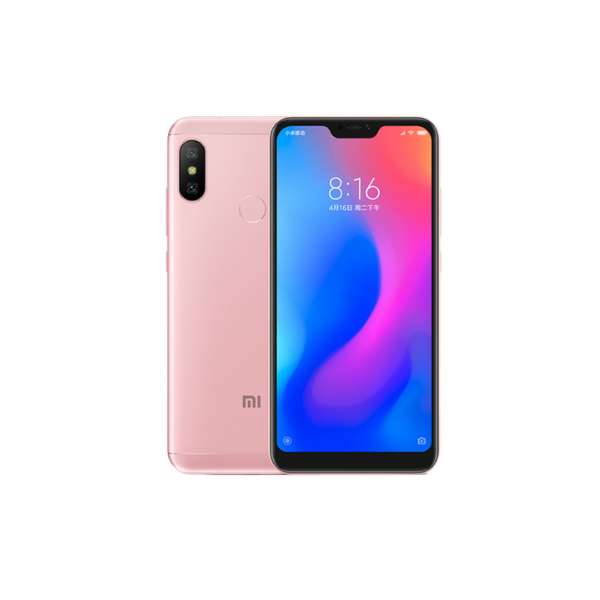

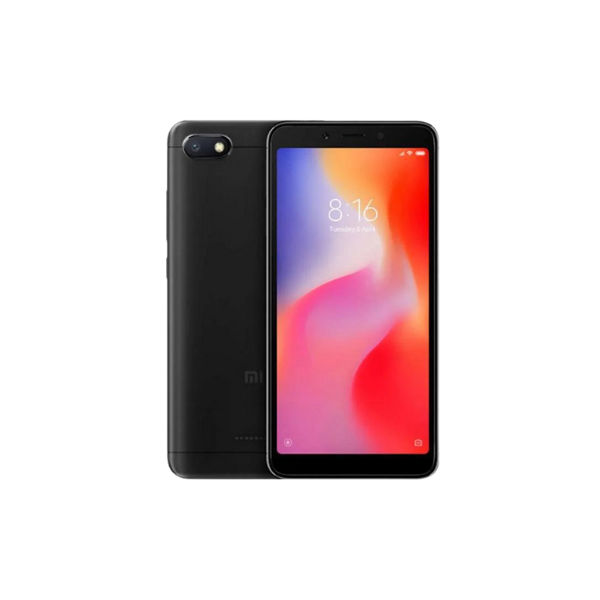
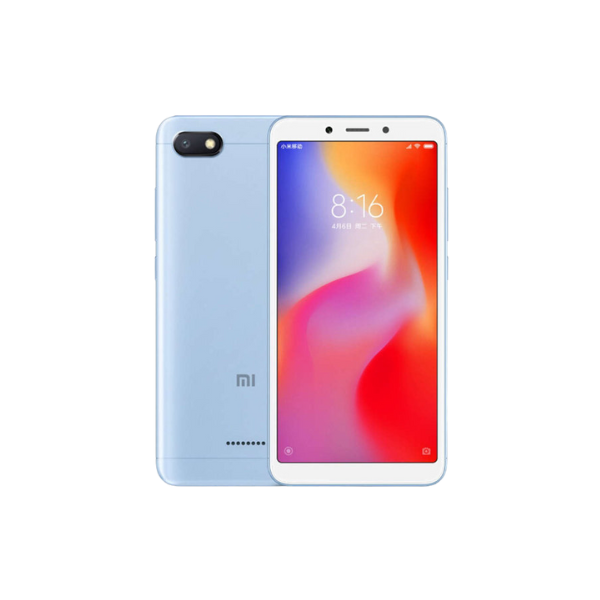
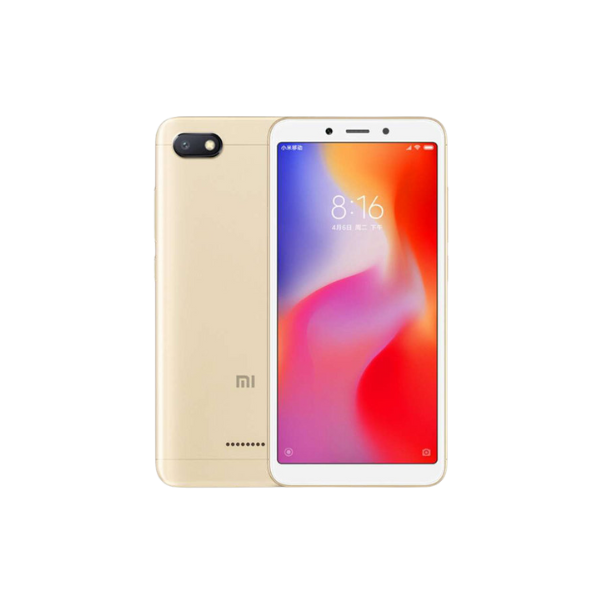
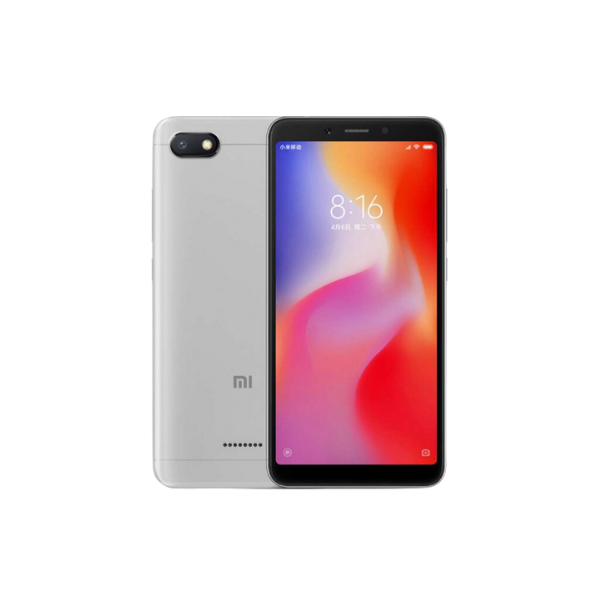
- CPU: Mediatek MT6761 Helio A22 (12 nm)
- RAM: 2 GB, 3 GB
- Storage: 16 GB, 32 GB
- Display: IPS LCD
- Camera: 13 MP Single Camera
- OS: Android 8.1 (Oreo), MIUI 12
- AnTuTu Total Score: 55.277
Redmi 6A Harga Malaysia Spesifikasi Malaysia
General
| Device Type | Smart Phone |
| Model | M1804C3CG, M1804C3CH, M1804C3CI |
| Announced | 01 June, 2018 |
| Released | 01 June, 2018 |
| Status | Available |
| Price | RM339 |
Design
| Type <strong>Design Type</strong> called form factor refers to a mobile phone's size, shape, and style as well as the layout and position of major components of phone. There are three major form factors seen in mobile phones => bar phones, folding phones and sliding phones. | Bar |
| Dimensions | 147.5 x 71.5 x 8.3 mm (5.81 x 2.81 x 0.33 in) |
| Weight | 145 g (5.11 oz) |
| Body Type | Glass front, plastic back, plastic frame |
| Colors | Black, Grey, Blue, Gold, Rose Gold |
Network
| 4G Network |
1, 2, 3, 4, 5, 7, 8, 20, 38, 40 - Global 1, 3, 5, 7, 8, 34, 38, 39, 40, 41 |
| SIM <strong>SIM</strong> (Subscriber Identity Module) is a small card that contains mobile network subscriber's account information. This allows the phone using the card to attach to a mobile network. The SIM card is most commonly associated with GSM and UMTS mobile networks. Moving a SIM card from one phone to another allows a subscriber to switch mobile phones without having to contact their mobile network carrier. SIM cards can also be used by a phone to store limited amounts of data, such as phone numbers and text messages. | Nano SIM |
| Dual SIM | dual stand-by |
Display
| Display Type <strong>Display Technology => </strong> A number of display technologies and types used in mobile phones => TFT (Thin Film Transistor), IPS (In-Place Switching), OLED (Organic Light Emitting Diode), AMOLED (Active-Matrix Organic Light-Emitting Diode), Super AMOLED (an even advanced version of AMOLED), Resistive Touchscreen (Resistive touchscreens contain two layer of conductive material with a very small gap between them which acts as a resistance), Capacitive Touchsceen (Capacitive touchscreen technology consists of a layer of glass coated with a transparent conductor) | IPS LCD |
| Size | 5.45 inches, 76.7 cm2 (~72.7% screen-to-body ratio) |
| Resolution | 720 x 1440 pixels, 18:9 ratio |
| Display Colors <strong>Display Colors</strong> is refers to the number of different shades of colors that the screen is capable of displaying => 64K colors, 256K colors and 16 million colors, Obviously 16M is highest available range of colors and better than others. | 16 Millions Colors |
| Pixel Density <strong>Pixel Density (PPI)</strong> is refers to the concentration of pixels on a particular display, measured in pixels per inch (ppi). Pixel density is calculated by dividing the diagonal pixel resolution of a display by its diagonal size, higher pixel density better display quality. | (~295 ppi density) |
| Touch Screen | Yes, Multitouch |
Camera
| Rear Camera <strong>Camera</strong> is able to capture photographs and usually videos, The most important characteristics of a camera are the resolution (measured in megapixels), lens focus type (fixed or automatic), higher megapixel cameras are known to capture higher quality photos, but not always a good measurement of the photos quality. | Single Camera 13 MP, f/2.2, PDAF |
| Front Camera | 5 MP, f/2.2 |
| Image | 1080p |
| Video | 1080p@30fps |
| Camera Features | LED flash, HDR, panorama |
Software
| Operating System <strong>OS => </strong> Every computer system run on a base software called Operating System (OS). Operating System controls all basic operations of the computer (such as smartphone, PDAs, tablet computers and other handheld devices). The Operating System allows the user to install and run third party applications (apps), apps are used to add new functionality to the device. | Android 8.1 (Oreo), planned upgrade to Android 10 |
| User Interface <strong>UI</strong> or user interface of a device is the look and feel of the on-screen menu system. How it works, its color scheme, how it responds to button presses, all of these things are part of the user interface. | MIUI 12 |
Hardware
| Chipset <strong>Chipset</strong> is a group of integrated circuits designed to perform one or a more dedicated functions, often with real time computing constraints, Popular smartphones are equipped with more advanced embedded chipsets that can do many different tasks depending on their programming. | Mediatek MT6761 Helio A22 (12 nm) |
| CPU <strong>CPU</strong> (Central Processing Unit) mostly known as processors, CPU processes instructions in order to carry out certain functions that make your device operate properly. Processors are often described as the brain of computers, smartphones and tablets, Smartphones and tablets rely on processors to carry out their every task, Processors are an incredibly important factor in selecting any type of computing device, including your smartphone. | Quad-core 2.0 GHz Cortex-A53 |
| GPU <strong>GPU</strong> (Graphics Processing Unit) is a single-chip processor designed to rapidly manipulate and alter memory to accelerate the creation of images in a frame buffer intended for output to a display, This includes things such as lighting effects, object transformations, and 3D motion. | PowerVR GE8320 |
| RAM (Memory) <strong>RAM</strong> (Random Access Memory) is a type of computer memory that can be accessed randomly, any byte of memory can be accessed without touching the preceding bytes that allows information to be stored and accessed quickly from random locations. RAM is the most common type of memory found in computer systems, smartphones, tablets and other electronic devices. | 2 GB, 3 GB |
| Internal Storage <strong>Internal Storage</strong> is a data storage space (flash memory) mostly used in smartphones, tablets and other electronic devices where operating system, apps, music, photos, videos, files and other user data Is stored. | 16 GB, 32 GB |
| Card Slot <strong>Memory Card Slot</strong> is a special slot for inserting a memory card. Memory cards allow you to expand the phone's built-in memory, A memory card (sometimes called a flash memory card or a storage card) is a small storage medium used to store data such as text, pictures, audio, and video, for use on small, portable or remote computing devices such as mobile phones, mp3 players, digital cameras. | microSDXC (dedicated slot) |
| Sensors <strong>Sensors</strong> are electronic components that detects and responds to some type of input from the physical environment. The specific input could be light, heat, motion, moisture, pressure and location, The output is generally a signal that is converted to use in computing systems, a location sensor, such as a GPS receiver is able to detect current location of your electronic device. | Accelerometer, proximity, compass |
Battery
| Battery Type <strong>Battery Type => </strong> Cell phones run on various kinds of batteries depending on the manufacturer, phone size or shape and features. There are basically four types of cell phone batteries => Lithium Polymer, Lithium Ion, Nickel Metal Hydride and Nickel Cadmium. | Li-Ion (Lithium Ion) |
| Placement | non-removable |
| Capacity <strong>Battery Capacity</strong> is a measure (typically in Amp-hr) of the charge stored by the battery, and is determined by the mass of active material contained in the battery. The battery capacity represents the maximum amount of energy that can be extracted from the battery under certain conditions. | 3000 mAh |
| Charging | 10W wired |
Connectivity
| Bluetooth <strong>Bluetooth</strong> is a wireless communications technology for exchanging data between mobile phones, headsets, computers and other network devices over short distances without wires, Bluetooth technology was primarily designed to support simple wireless networking of personal consumer devices. | 4.2, A2DP, LE |
| Wi-fi <strong>Wi-Fi</strong> is a popular wireless networking technology using radio waves to provide high-speed network connections that allows devices to communicate without cords or cables, Wi-Fi is increasingly becoming the preferred mode of internet connectivity all over the world. | Wi-Fi 802.11 b/g/n, Wi-Fi Direct |
| Wi-fi Hotspot | |
| USB | microUSB 2.0 |
| GPS <strong>GPS</strong> The Global Positioning System is a satellite-based radio navigation system, GPS permits users to determine their position, velocity and the time 24 hours a day, in all weather, anywhere in the world, In order to locate your position, your device or GPS receiver must have a clear view of the sky. | GPS, GLONASS, BDS |
| NFC <strong>NFC</strong> (Near field communication) is a set of standards for smartphones and similar devices to establish peer-to-peer radio communications with each other by touching them together or bringing them into proximity, usually no more than a few inches. | |
| Wireless Charging <strong>Wireless Charging</strong> (Inductive Charging) uses an electromagnetic field to transfer energy between two objects. This is usually done with a charging station. Energy is sent through an inductive coupling to an electrical device, which can then use that energy to charge batteries or run the device. | No |
Media
| Loudspeaker | Yes |
| Handsfree | 3.5mm jack |
Di antara beberapa siri telefon pintar yang dimiliki oleh Xiaomi, siri Redmi adalah salah satu yang paling popular, di antaranya ialah Xiaomi Redmi 6A. Redmi 6A merupakan salah satu produk telefon pintar yang paling diminati.
Salah satu telefon Xiaomi yang paling murah ini mempunyai banyak kelebihan yang diperlukan oleh pengguna pemula. Boleh dikatakan harga dan spesifikasi perkakas yang dimiliki oleh Redmi 6A adalah faktor utama.
Jadi, bagaimanakah prestasi Xiaomi Redmi 6A? Bagaimanakah keupayaan kamera? Bagaimanakah reka bentuk Xiaomi Redmi 6A? Adakah harga sepadan dengan keupayaannya? Berikut adalah ulasannya.
Reka Bentuk
Xiaomi Redmi 6A mempunyai reka bentuk yang agak mewah, walaupun berada dalam kelas rendah. Badannya diperbuat daripada bahan yang menyerupai keluli, tetapi sebenarnya, badan Xiaomi Redmi 6A menggunakan bahan plastik polikarbonat.
Dengan menggunakan bahan plastik, Xiaomi Redmi 6A sangat ringan. Mengikut data spesifikasi Redmi 6A, beratnya hanya 145 gram.
Kelebihan lain, Xiaomi Redmi 6A sangat selesa digenggam. Ini boleh berlaku kerana bahagian belakangnya agak melengkung.
Tidak tajam dan kukuh. Pada pandangan pertama, Xiaomi Redmi 6A kelihatan mempunyai reka bentuk tanpa tepi. Walau bagaimanapun, setelah mengamati, tepi atau bingkai telefon pintar (HP) ini sebenarnya agak tebal.
Di bahagian kanan terdapat butang Power dan Volume. Sementara itu, di bahagian kiri hanya terdapat slot SIM dan kad Micro SD. Di bahagian atas terdapat lubang earphone 3.5mm dan mikrofon.
Kemudian di bahagian bawah, terdapat mikrofon utama untuk menangkap bunyi semasa menerima panggilan. Lubang cas ada di bahagian bawah dengan jenis Micro USB. Lubang speaker terletak di belakang badan, tepat di bahagian bawah.
Paparan
Xiaomi Redmi 6A dilengkapi dengan skrin IPS 5.45 inci. Skrin ini menyokong resolusi HD+ (1,440 x 720 piksel) dan nisbah aspek 18:9 (sejenis tanpa tepi).
Dengan sokongan nisbah aspek ini, anda dijamin dapat menonton video dan bermain permainan dengan lebih selesa. Sebabnya adalah, kawasan yang dipaparkan di skrin menjadi lebih lebar.
Namun, sayangnya, skrin ini tidak begitu baik dalam memaparkan warna, cenderung terlalu terlampau. Walau bagaimanapun, skrin ini masih cukup selesa untuk dilihat. Tidak terlalu buruk untuk produk dengan harga yang agak rendah.
Kamera
Dalam bahagian kamera, sayangnya telefon ini tidak dilengkapi dengan kamera dua bahagian di bahagian belakang. Oleh itu, anda haruslah cukup puas dengan satu kamera dengan konfigurasi lensa 13 MP.
Lensa 13 MP ini mempunyai apertur f/2.2 dan ciri PDAF. Sementara itu, di bahagian hadapan, anda boleh menjumpai kamera dengan lensa 5 MP. Apertur untuk kamera hadapan adalah kecil, iaitu f/2.2. Hasil foto kamera hadapan agak memuaskan. Anda boleh bergantung pada ciri kecantikan.
Bagi foto itu sendiri, kamera belakang Xiaomi Redmi 6A cukup menjanjikan dalam kelasnya. Hasil foto pada waktu siang boleh dipaparkan dengan baik. Walaupun kadang-kadang terdapat pendedahan berlebihan.
Namun, untuk pengambilan gambar pada waktu malam, kamera Xiaomi Redmi 6A tidak boleh diandalkan terlalu banyak. Masih sering dilihat bunyi bising ketika mengambil gambar pada waktu malam dan dalam keadaan cahaya rendah.
Sementara itu, bagi foto selfie, anda tidak boleh mengharapkan lebih banyak untuk mendapatkan hasil foto yang semula jadi. Sebab, walaupun ciri kecantikan telah dimatikan, wajah anda akan kelihatan licin. Kualiti foto juga mempunyai banyak kabur dan bunyi.
Prestasi
Xiaomi 6A digerakkan oleh cipset Mediatek Helio A22. Kecekapan kuasa cukup baik mengingat cipset ini dikeluarkan dalam fabrikasi 12nm. Sementara itu, CPU menggunakan Cortex-A53 yang mempunyai kecekapan tinggi.
Selain itu, kelajuan jam tinggi 2.0 GHz memastikan prestasi yang lebih cepat dan lebih cekap. Cipset berkesan ini disertai dengan 2GB RAM dan 16GB storan dalaman yang boleh ditambah dengan kad mikroSD 256GB.
Bateri
Xiaomi telah menyematkan bateri dengan kapasiti 3000 mAh pada telefon pintar ini.
Dengan kata lain, daya tahan bateri Redmi 6A adalah praktikal untuk penggunaan harian. Bateri Redmi 6A berjaya bertahan selama 12 jam 55 minit berdasarkan ujian penanda aras PCMark.
Harga
Di pasaran Malaysia, Xiaomi Redmi 6A dijual pada harga bermula dari RM 229.00 untuk varian dengan storan dalaman 16GB dan varian dengan storan dalaman 32GB, dijual pada harga bermula dari RM 358.00.
Anda boleh melawat laman web rasmi di Mi Malaysia
Soalan Lazim
Berapa kerap Xiaomi Redmi 6A mendapat kemas kini perisian?
Malangnya, peranti ini tidak boleh menerima kemas kini perisian MIUI, seperti MIUI 12 dan seterusnya.
Berapa hayat bateri Redmi 6A?
Xiaomi Redmi 6A boleh bertahan selama 10 jam 05 minit hingga tahap kritikal 15%, yang agak menarik untuk telefon pintar dengan harga rendah.
Adakah Redmi 6A menyokong rangkaian 5G?
Tidak. Peranti ini tidak menyokong rangkaian 5G.
Itulah ulasan mengenai Redmi 6A dari segi spesifikasinya dan harga Redmi 6A.

